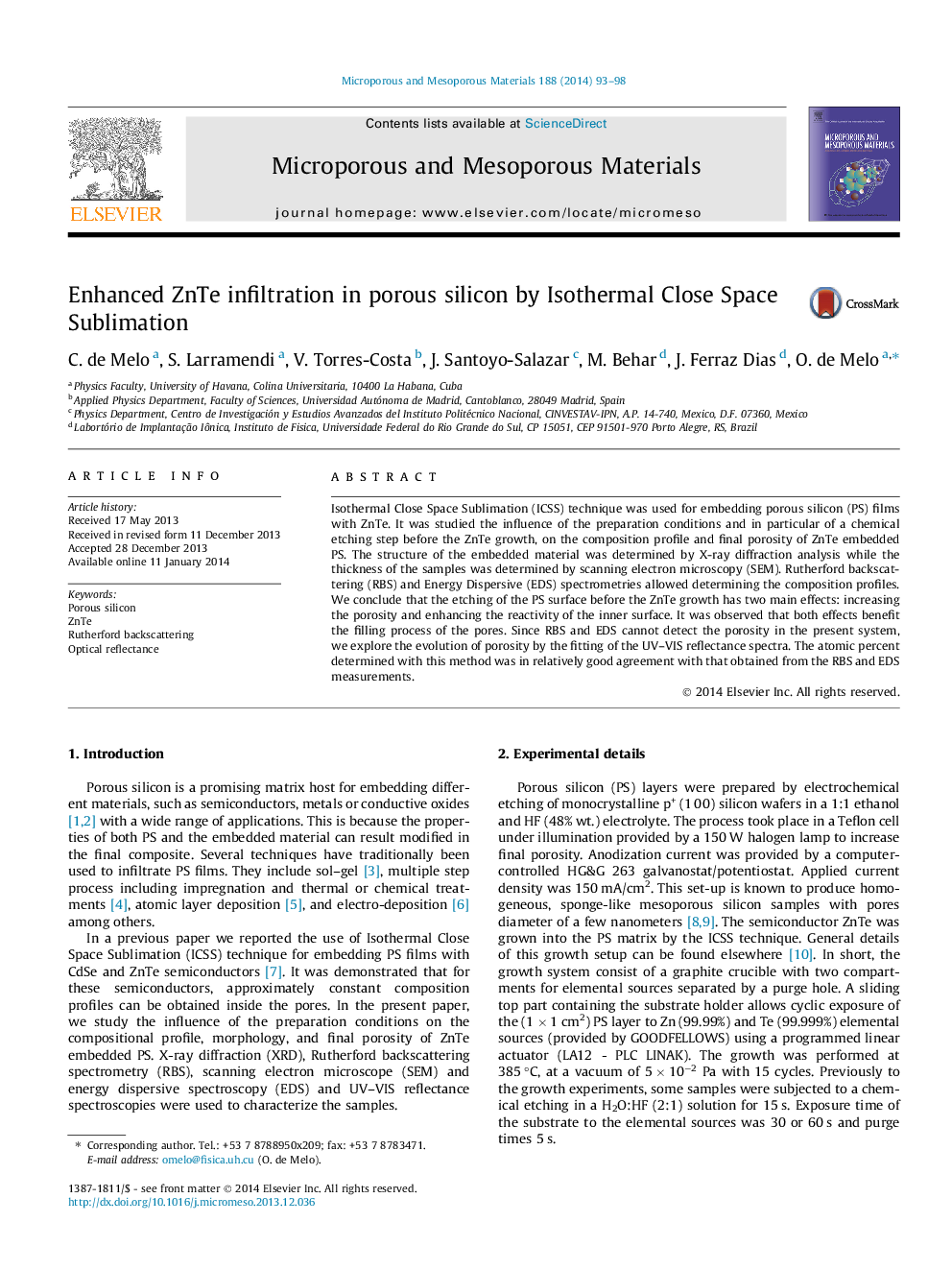| Article ID | Journal | Published Year | Pages | File Type |
|---|---|---|---|---|
| 73185 | Microporous and Mesoporous Materials | 2014 | 6 Pages |
•We have studied the infiltration of porous silicon with ZnTe.•Isothermal close space sublimation allowed successful pores infiltration.•Infiltration is enhanced by a previous chemical etching step of porous silicon.•There is a remained porosity as it is expected due to the used growth method.
Isothermal Close Space Sublimation (ICSS) technique was used for embedding porous silicon (PS) films with ZnTe. It was studied the influence of the preparation conditions and in particular of a chemical etching step before the ZnTe growth, on the composition profile and final porosity of ZnTe embedded PS. The structure of the embedded material was determined by X-ray diffraction analysis while the thickness of the samples was determined by scanning electron microscopy (SEM). Rutherford backscattering (RBS) and Energy Dispersive (EDS) spectrometries allowed determining the composition profiles. We conclude that the etching of the PS surface before the ZnTe growth has two main effects: increasing the porosity and enhancing the reactivity of the inner surface. It was observed that both effects benefit the filling process of the pores. Since RBS and EDS cannot detect the porosity in the present system, we explore the evolution of porosity by the fitting of the UV–VIS reflectance spectra. The atomic percent determined with this method was in relatively good agreement with that obtained from the RBS and EDS measurements.
Graphical abstractFigure optionsDownload full-size imageDownload as PowerPoint slide
